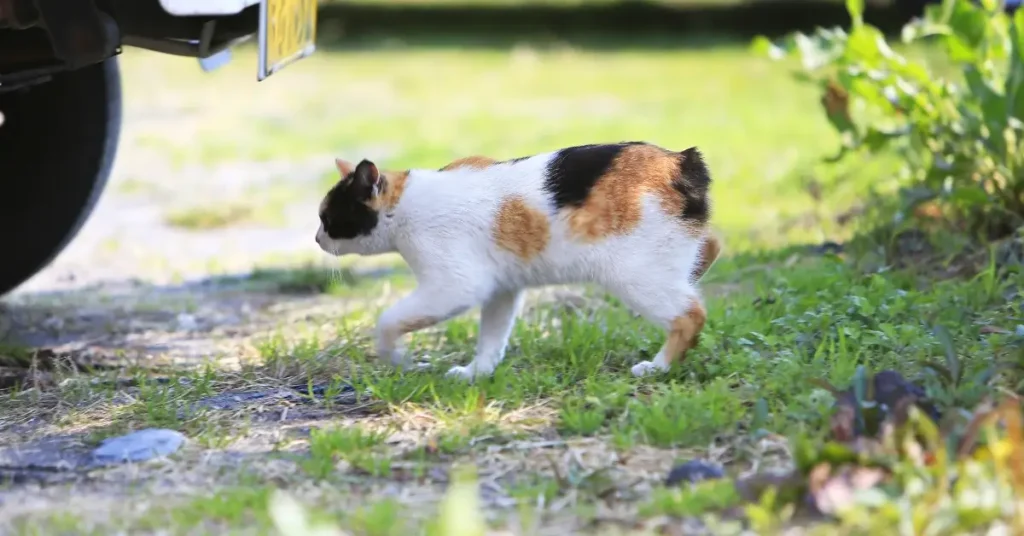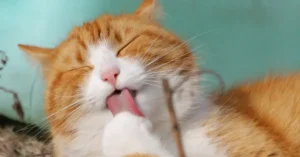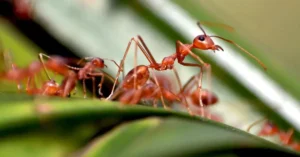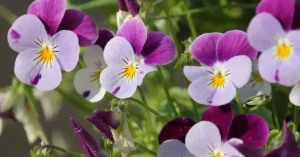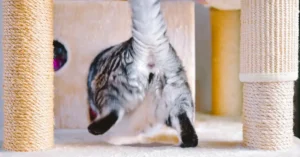Have you ever been captivated by the grace and mystery of Japanese breed cats? These feline beauties are more than just pets; they are a symbol of elegance and cultural richness.
From the bobtailed Maneki-neko, believed to bring good luck, to the luxurious, long-haired Japanese Bobtail, each breed has a story that’s deeply entwined with Japanese history and folklore. In this article, we’ll explore the unique characteristics that make these breeds stand out.
Whether it’s their striking looks, playful personalities, or their deep-rooted connections to Japanese traditions, there’s so much to learn and love about these enchanting cats. Join us on a journey to discover the charm and splendor of Japanese breed cats, and find out why they’re cherished not just in Japan, but around the world.
History and Origins
We find the tale of Japanese breed cats utterly captivating, with a heritage that intertwines closely with Japan’s cultural tapestry. From their role in ancient folklore to their status as symbols of good fortune, these felines carry a rich history that’s as intriguing as their distinctive looks.
Beginnings in Japan
The Japanese Bobtail is often considered the archetype of Japanese breed cats. Genetic studies suggest that this breed, with its signature short, ‘kinked’ tail, emerged from domesticated and feral cats that were native to Southeast Asia and southern China. These cats embarked on their journey to Japan thousands of years ago, likely through the avenues of the silk trade, which was also responsible for the exchange of goods, culture, and living treasures like these charming felines.
- First reference: 6th–8th Centuries
- Likely origin: Southern China / Southeast Asia
- Introduction to Japan: Via the silk trade
Historical Significance
Throughout history, Japanese breed cats have occupied a significant place in Japanese culture and folklore. The Maneki Neko, or the beckoning cat, exemplifies this; it is a popular figure believed to bring good fortune. Painted on rice paper scrolls and featured in paintings, Japanese breed cats became emblems of prosperity and good luck. Moreover, Buddhist monks held these feline companions in high esteem, with historical records indicating that cats were brought to Japan to protect precious Buddhist texts from rodents.
- Symbol of good fortune: Maneki Neko
- Protector of sacred texts: Role in temples
It’s also worth noting that the first documented breeding program for the Japanese Bobtail was established by an American woman, Elizabeth Freret, in the late 1960s, highlighting the breed’s international appeal and the enduring fascination with these culturally significant creatures.

Physical Characteristics
When we explore Japanese breed cats, we instantly notice their distinct and charming physical traits that set them apart.
Tail Variations
The Japanese Bobtail cat is renowned for its unique “pom” tail. Unlike other cats, their tails are like fluffy pom-poms, quite short and can be curved, kinked, or angled. This tail variation is due to a natural mutation and is a breed hallmark.
Coat and Color
Japanese breed cats often sport a medium-length coat that can come in many colors. The coat may be solid, pointed, or come in a splendid mix of colors. Their coat is soft to the touch and adds to their adorable appearance. The Japanese Bobtail, for example, shows a striking array of possible coat patterns and colors.
Facial Features
With their wide faces, small noses, and rounded ears, Japanese breed cats’ facial features are quite distinctive. Their large, expressive eyes can captivate anyone and are a window into the playful and affectionate soul typical of these breeds. This combination of features has been shaped by both genetics and selective breeding over centuries.

Temperament and Personality
When we explore the world of Japanese breed cats, we’re often struck by their remarkable temperaments and multifaceted personalities. These delightful felines are a joy to behold, balancing affectionate warmth with spirited playfulness.
Behavioral Traits
Japanese breed cats are known for their sociable and outgoing nature, often mirroring the harmonious balance found in Japanese culture. Here are some of their distinctive behavioral traits:
- Playful & Active: They demonstrate high levels of energy and enthusiasm in their play, making them fascinating companions.
- Intelligent: Their intelligence shines through in their ability to adapt quickly to new environments and situations.
- Sweet & Loving: A hallmark of these cats is their sweet demeanor that endears them to everyone they meet.
Interaction with Humans and Pets
Japanese breed cats are not just affectionate with their human friends; they also exhibit outstanding pet-friendly qualities:
- Friendly: These cats typically get along well with other pets, marking them as a fantastic addition to multi-pet households.
- Kid-Friendly: Their gentle and loving disposition makes them ideal companions for families with children.
- Sociable: Known for their desire to be involved, they are often described as ‘people-oriented’ cats who thrive on social interaction.
Undoubtedly, these sociable and adaptable felines with their friendly and affectionate nature are a testament to the beauty of Japanese breed cats. Whether you’re playing interactive games or enjoying a quiet day, their vibrant spirits and loving attitudes create a delightful atmosphere in any home.

Care and Management
We love our Japanese breed cats! Ensuring these elegant felines stay healthy and happy is crucial, and we’ve got some specifics to share with you on exactly how to do just that.
Health and Lifespan
Japanese breed cats are known for their robust health, with a typical lifespan of 9 to 15 years. It’s essential to provide regular veterinary check-ups to catch any potential health problems early on. The Japanese Bobtail is one breed that exemplifies these traits, but remember, individual care can extend their years.
Nutrition and Diet
- Balanced Diet: Offer a high-protein diet to support their energetic nature.
- Watch the Weight: Keep carbohydrates low and monitor their weight to avoid obesity.
Food should be rich in nutrients and appropriate for their life stage. Ensuring meals contain real meat or fish as the main ingredient will cater to their needs perfectly.

Grooming Needs
Despite their potentially magnificent coat, Japanese breed cats are often quite low-maintenance. Short-haired varieties require less frequent brushing, but long-haired beauties need brushing several times a week to avoid tangles. An annual check for ear cleaning and nail trimming is also beneficial.
Exercise and Play
These cats adore playtime, and with high energy levels, they thrive best when they have ample opportunity for exercise. Incorporating interactive toys, cat trees, and puzzle feeders can keep them engaged and mentally stimulated. Daily play sessions will also help maintain a healthy weight and balance their playful spirits.
Cat Breeds Comparison
When we explore the diverse world of Japanese breed cats, we discover a range of breeds each with distinct characteristics and behaviors. Whether you’re a fan of silky longhair breeds or the playful shorthair ones, there’s much to learn and appreciate.
Other Japanese Breeds
Shorthair:
- Japanese Bobtail: Known for their pompom-like tail, these cats are an ancient breed native to Japan.
- Russian Blue: Although not originally from Japan, they’re loved for their dense, blue-grey coat and vivid green eyes.
Longhair:
- Persian: While not a Japanese breed, Persians are popular for their luxurious coat and sweet personality.
- Somali: These longhaired beauties are related to the Abyssinian and are esteemed for their fox-like appearance.
Others:
- American Shorthair: Often confused with domestic cats, they have a well-earned popularity in Japan.
- Scottish Fold: With their unique folded ears, they’ve captured hearts around the globe, including Japan.

Breed Behavior Comparison
- Japanese Bobtail vs. Manx: Both breeds are known to be sociable, yet the Bobtail is particularly noted for its chattiness.
- Bengal vs. Abyssinian: These active breeds share an energetic nature, with Bengals displaying more of a wild streak.
- Russian Blue vs. Somali: Russian Blues are often reserved and gentle, while Somalis are playful and curious.
- Persian vs. Maine Coon: Persians have a more laid-back temperament compared to the friendly and rugged Maine Coon.
- American Shorthair vs. Munchkin: American Shorthairs are easygoing and affectionate, contrary to the whimsical and outgoing Munchkin.
Cultural Impact
We see the indelible paw print Japanese breed cats have left not just in their homeland but across the globe. They’ve woven their way through art, media, and cafes, leaving whiskered marks of independence and folklore.
Japanese Cat Iconography
The Japanese Bobtail is an emblem of good fortune, often depicted with one paw raised in the ‘Maneki-neko’ or beckoning cat figurine. Far from just ornamental, these figurines are a common sight in businesses, believed to attract wealth and prosperity.
Hello Kitty, a creation of Sanrio, showcases the global allure of Japanese cat iconography. Born from the heart of Japan, this character has burgeoned into a brand worth billions, adorning everything from school bags to airplanes.
Mi-ke, or ‘three fur’ cats, are a tricolored variety often portrayed in Japanese folklore, seen as harbingers of good luck. Their impressive depiction in ukiyo-e art further cemented their status as cultural icons.

Global Popularity
Japanese breed cats like the Bobtail personify independence, a trait celebrated in Japanese culture, resonating with cat aficionados worldwide.
Their appeal has transcended boundaries all the way to Asia and beyond. Cat cafes, which originated in Taiwan and exploded in popularity in Japan, have become a fixture in cities globally, allowing people to experience the charm of these felines firsthand. These social spaces encapsulate the comfort and companionship that Japanese breed cats provide, making the idea of lingering over coffee with a cat on one’s lap an alluring experience.
Our Thoughts About Japanese Breed Cats
Japanese breed cats have a special allure that captures our hearts. We’re talking about those charming felines from the Land of the Rising Sun—an array of breeds that bring a distinct touch of elegance and tradition to the cat world. Intrigued by their history and unique characteristics, we’ve found ourselves utterly enchanted by these graceful creatures.
- Japanese Bobtail: We love how each has a distinctive tail, resembling a fluffy pom-pom, which sets them apart from other breeds. The Japanese Bobtail is not only charming but also known for its playful and friendly nature.
- Kurilian Bobtail: This breed often draws us in with its wild appearance and sturdy physique. Despite their strong build, they are actually quite gentle and amiable.
The Appeal of Personality and Poise
| Breed | Traits We Admire |
|---|---|
| Japanese Bobtail | Sociable, Intelligent, Active |
| Kurilian Bobtail | Gentle, Good with Families, Adaptable to Environment |
Their plush coats and captivating eyes make them a marvel to behold. Unique in both appearance and disposition, Japanese breed cats exhibit a harmonious blend of independence and affection that’s difficult not to adore.
The sheer diversity among these breeds is fantastic! Some like the Tsushima cat are rare, evoking a sense of mystery and exclusivity. Whether you’ve been a long-time cat lover or are newly considering a feline companion, we believe that Japanese breed cats offer a delightful mix of charm, culture, and companionship.
FAQ
We absolutely adore Japanese breed cats, and we’re thrilled to share everything we know about these charming felines from the Land of the Rising Sun. Whether you’re curious about the origin of the breeds or seeking insights into the rarities among these elegant creatures, you’re in the right place!
Are there any cat breeds from Japan?
Yes, Japan is home to several cat breeds, the most famous of which is the Japanese Bobtail. Known for its unique pom-pom-like tail, the Japanese Bobtail comes in both long and short-haired varieties. Other notable Japanese breeds include the Kurilian Bobtail, though it shares its history with Russia, and the luxurious, long-haired Japanese Longtail.
Are Siamese cats Japanese or Chinese?
Actually, Siamese cats are neither Japanese nor Chinese; they originate from Thailand, which was formerly known as Siam. The Siamese cat is known for its striking blue almond-shaped eyes, large ears, and sleek, muscular body. They are one of the most recognizable cat breeds in the world and are unrelated to the native cat breeds of Japan.
What is the rare cat in Japan?
What is the rare cat in Japan?
The Kurilian Bobtail, with its distinct short tail, is often mentioned among the rarer cat breeds in Japan Japanese Bobtails: What to Know. However, within Japan, the Iriomote cat, an indigenous wildcat living on the Iriomote Island, is considered incredibly rare and is a protected species due to its vulnerable status.
If you also would like to know something about the hairless cat breed have a look at our article.
If you are curious about the most expensive cat breeds it would be a pleasure if you read our article.
What are your thoughts about the Japanese breed cats? Let us know in the comments.

